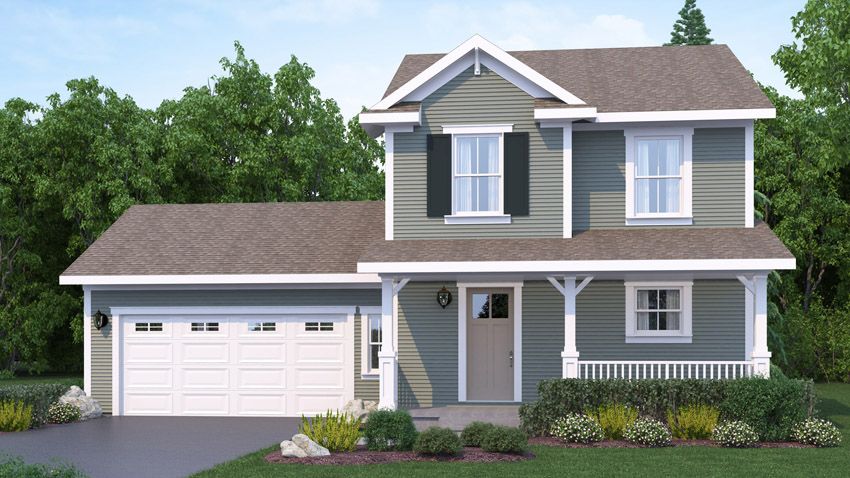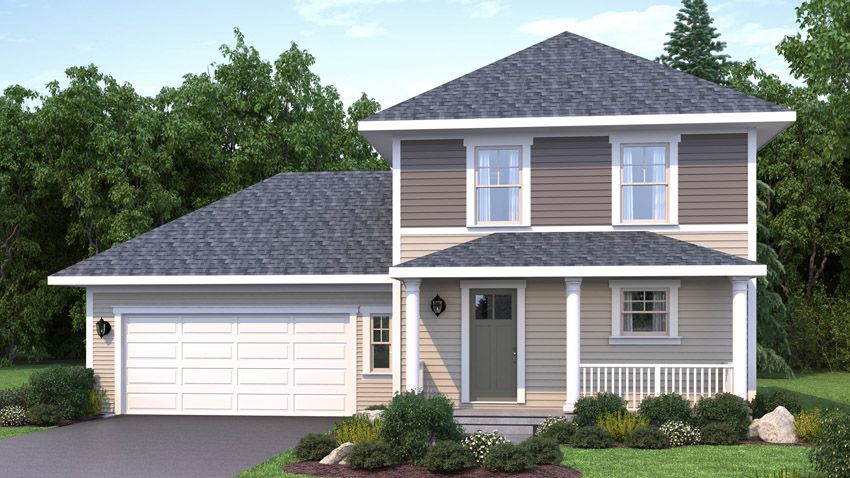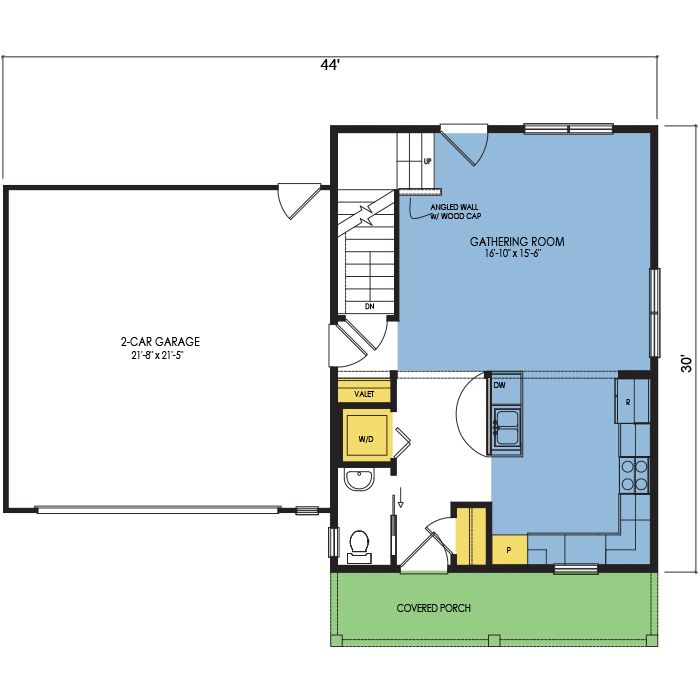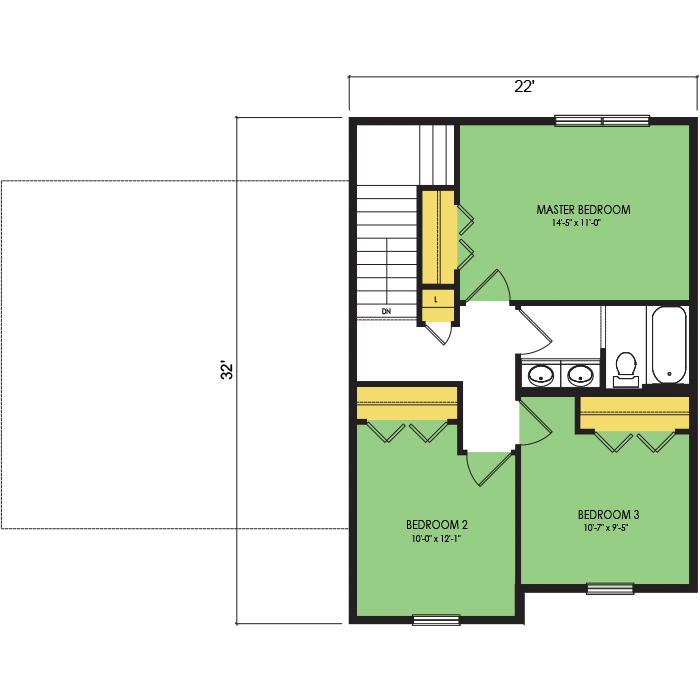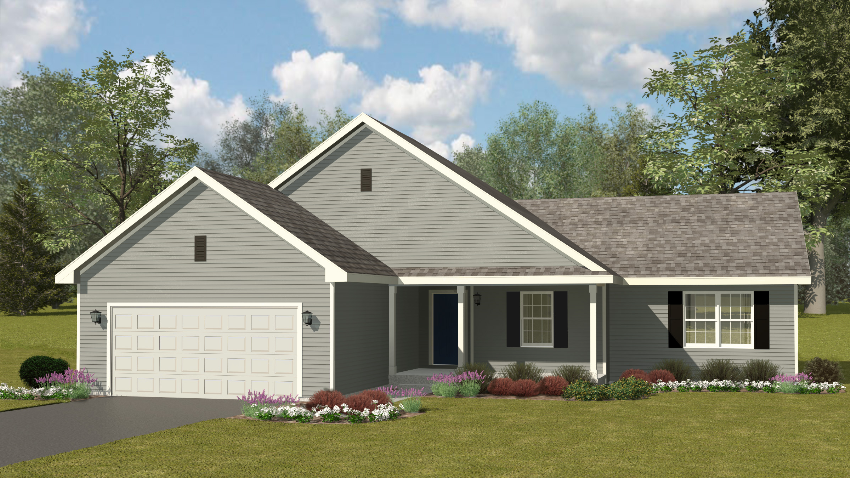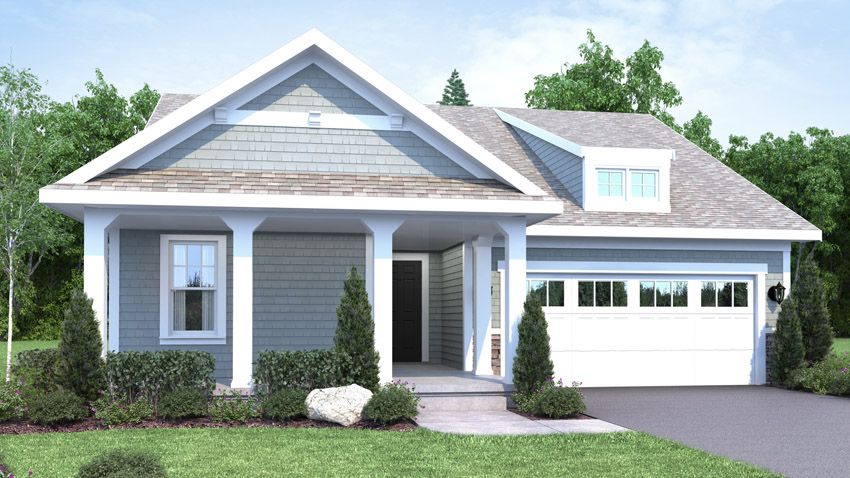An Expert Guide To Building A Home To Withstand Winter Weather
Winter can be hard on homes. Whether you experience heavy snowfall or sub-zero temperatures and a few flurries, it’s important to protect your home from the effects of the winter season.
From ice dams to freezing pipes, harsh weather conditions can cause serious damage to your home if the proper precautions are not taken during the building process. Here are some expert building tips for homebuyers who want to build a house that can withstand harsh winter weather.
Ensure A Quality Building Envelope
A tight quality building envelope is essential to any new home build to ensure your home is protected from the outdoor elements. A home’s building envelope is comprised of the materials that make up your foundation, walls, roof, windows, and doors. A quality building envelope will minimize drafts and air leaks, while accounting for natural ventilation.
Here are a few ways to ensure a quality building envelope:
-Hire A Builder With Proven Workmanship
-Ensure Siding Is Climate Appropriate
-Invest In Durable Shingles
-Install Energy Efficient Windows
-Determine A Proper Drainage System
-Upgrade Your Insulation
-Ensure High Quality Sealants Are Used
While some of these options can be costly, they may save you money in the long-term through lowering your overall energy costs.
Consider Triple-Pane Windows
If you have single-pane windows, consider investing in triple-pane options. With three layers of glass, these windows keep the warm air in, even during the coldest months. The extra layer of glass in a triple pane window will protect against extreme temperatures, loud noises, and direct sunlight all year long.
While triple-pane windows can be costly, they are a good investment that can increase your home’s value. Keep your home cozy, while reducing your energy bill with durable triple pane windows.
Splurge On A Quality Furnace
Investing in a high-efficiency furnace can not only save you money on your heating bills, but it can also ensure your home can maintain steady warmth in sub-zero temperatures. Determining the right type, size, and efficiency for your home is important. When choosing a furnace system, there are four fuel options to consider: gas, electric, oil, and propane.
Gas furnaces are the most popular on the market today. A natural gas furnace uses flames to warm the air that is blown through your ductwork to heat your home. Gas furnaces require a flue for the exhaust to exit your home. The flue must be inspected yearly to prevent posinouses gasses from entering your home. Gas furnaces may cost more upfront, but are more powerful than electric options and less expensive to operate.
Electric furnaces are the least expensive option on the market, however can be more expensive to operate since they solely rely on electricity to run. These systems use electric heating coils to warm the air that is blown through your ductwork to heat your home.
Oil furnaces operate in a similar fashion to gas furnaces, however oil furnaces use a burning chamber to heat the air before it is pushed through your home’s ductwork. Because oil burns at a hotter temperature than gas, these furnaces are known to heat up homes much faster. If you are considering going with an oil furnace option, you must also account for the oil tank needed to operate the system.
Propane furnaces also operate similarly to a natural gas system. The only difference is a propane furnace requires a direct vent instead of a flue for the exhaust to exit your home. Propane furnaces are known to be more efficient than their gas counterparts, therefore you can expect to burn less propane to get the same amount of warmth.
In addition to choosing the right fuel source for your furnace, you also will need to consider the system’s Annual Fuel Utilization Efficiency (AFUE) rating. The AFUE rating will indicate how much of the fuel energy is turned into usable versus wasted heat. The higher the AFUE number, the more efficient the furnace will be. Furnaces with a AFUE rating above 90% indicate a high-efficiency system.
Opt For In-Floor Heating
In-floor heating, also known as radiant heating, can be an alternative to a forced-air furnace system and is an energy-efficient way to keep your home warm and cozy during the cold winter months. There are two types of radiant heating options to consider: electric or hydronic systems.
Electric radiant floor heating systems use resistance cables or insulated wire that is installed above the subfloor. This system lets you customize the heating layout to ensure it’s exactly where you need it. Electric systems are connected to a thermostat where you can control the temperature and settings to ensure your home is warm and welcoming.
Hydronic radiant floor heating systems force warm water through tubes embedded in pre-cut channels in the subfloor. This system is connected to a hot water heater with a pump, which warms the floor above as it circulates the water. These systems are also connected to a thermostat to regulate the temperature of your home.
With both in-floor heating options, as warm air rises, it will evenly heat even the coldest rooms in your house. This means you won’t have to worry about heat escaping through your floors, which will keep your family and feet extra toasty.
Upgrade Your Insulation
If you live in an area that sees sub-zero temperatures or if your home isn’t properly insulated, it may be difficult to maintain a temperature inside that is warm enough to protect your family and pipes from freezing. Investing in high-grade insulation will reduce your energy costs and protect your home from drafty outdoor elements.
Insulation is rated by its R-value, which measures how resistance insulation is to heat flow. R-values vary based on the type, thickness, and density of the insulation. Insulation with a higher R-value leads to better climate control and energy efficiency for your home. Based on your location’s climate, the Department of Energy recommends different insulation levels, however the industry standard is R-38, which equates to a 12” insulation depth.
When choosing the right type insulation for your home the three most popular options are: loose fill, batts, or foam.
Loose fill insulation consists of fluffy fibers that are blown into your home’s interior framework. This type of insulation is made up of fiberglass, cellulose, or mineral wool. Loose fill insulation is moderately priced and works best for attics or hard to reach areas. R-values range from 2.2-3.8 per inch depending on the material.
Batt insulation is constructed in pre-cut blankets that are usually made of fiberglass material. Batt insulation works best in walls, floors, and ceilings and is one of the most affordable types of insulation. Fiberglass batts have r-values ranging from 2.9-4.3 per inch.
Foam insulation can come in rigid boards or spray form and usually is a more expensive option. However the cost far outways the performance, with a high R-value rating between 4.0-6.5 per inch.
Foam board insulation is one of the most common types of insulation and can be used to insulate almost any part of your home from the roof down to the foundation. Foam boards are made from polystyrene, polyurethane, or polyisocyanurate materials.
Spray foam insulation consists of a polyurethane foam that expands and hardens to seal gaps. Spray foam works best for insulating around doors, windows, and vents, or hard to reach areas of your home.
Ensuring your home is properly insulated through the walls, floors, attic, pipes, and crawl spaces, will lead to ultimate warmth and protection for your family throughout the winter season.
Ensure Your Roof Can Endure Substantial Snowfall
If you live in an area with cold winters and heavy snowfall, you’ll need a properly designed roof that can handle the extra weight of packed snow. A properly designed roof design will take into account the roof material and required angle for your location’s climate. The top roofing materials for snowy climates are metal or asphalt shingles.
Metal roofs are by far the best material for shedding snow, as they have very little resistance, can withstand up to 140 mile-per-hour winds, and can last up to 40 years. As the sun warms the roof, the snow will slide right off in sheets, preventing destructive ice dams from forming on your roof. However, metal roofs come with a hefty price tag.
Alternativy, asphalt shingles are the next best snowy weather option. Although they are a bit more resistant than a metal roof, they are much more affordable. Most asphalt shingles come with a 20-30 year warranty and can withstand up to 135 mile-per-hour winds. Choosing a darker color when selecting your asphalt shingle may increase the speed at which the snow melts and slides off your roof.
Roof angles in snowy climates should have at least a ten-degree pitch to help shed snow in the wintertime. Steeper angled roofs can structurally handle heavier loads of snow, allowing the thawing snow to slide down and off the roof much faster. While an angled roof helps prevent snow from piling up, having a complex roof design with too many angles could lead to structural problems preventing the roof from shedding snow properly.
Be sure that you invest in a durable roof that is designed with your climate in mind to ensure your home can withstand harsh weather conditions in your area.
This Winter, Make Your House Feel Warm And Welcome
Winter can be tough on homes, but by following these tips you’ll ensure your family is safe and warm all year long. Build a quality, custom home, built to withstand even the coldest winter months, with help from an experienced Wausau Homes Builder. Find Your Local Wausau Homes Builder today to get started.
CONNECT WITH US
ZIP not found
Invalid ZIP format.

